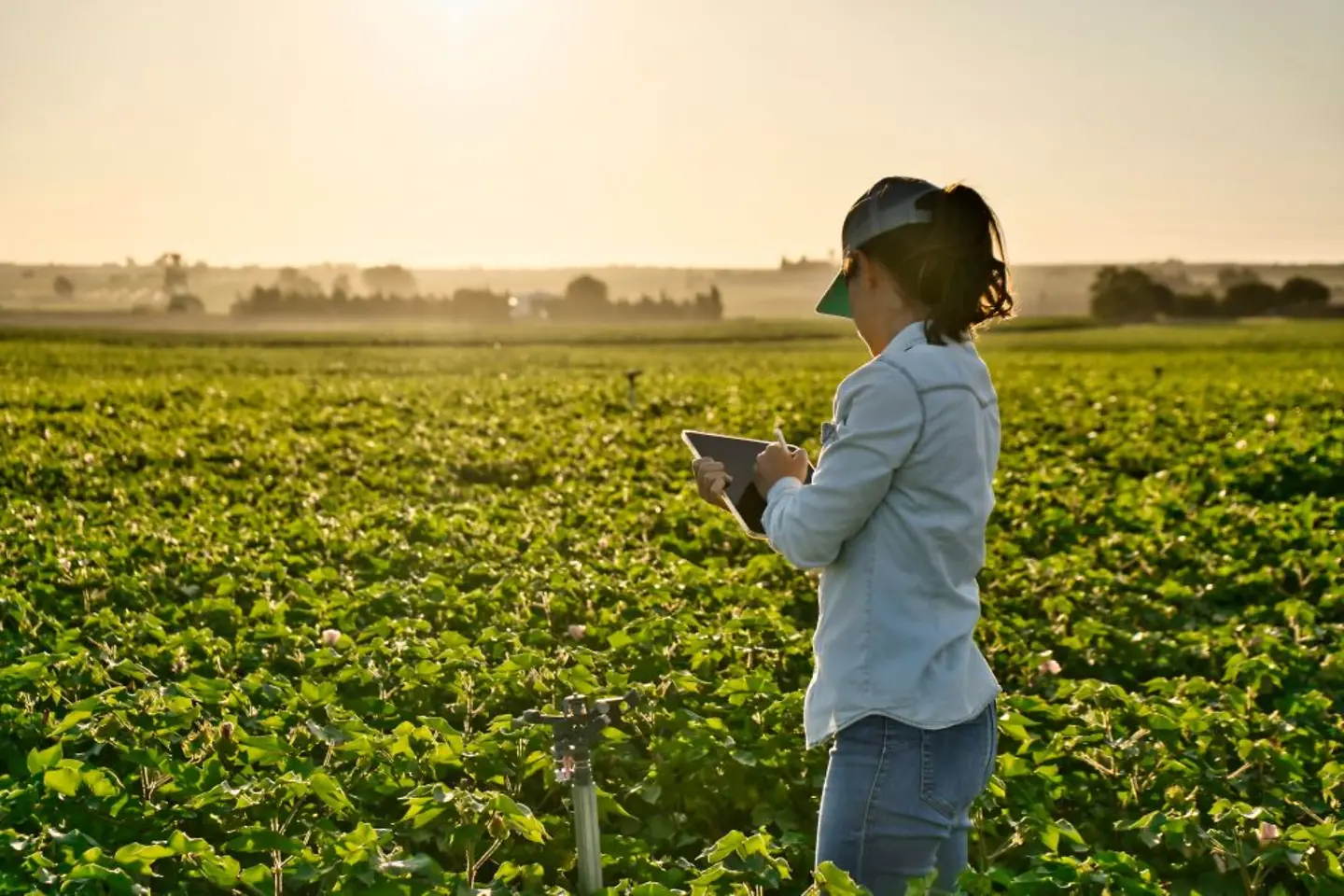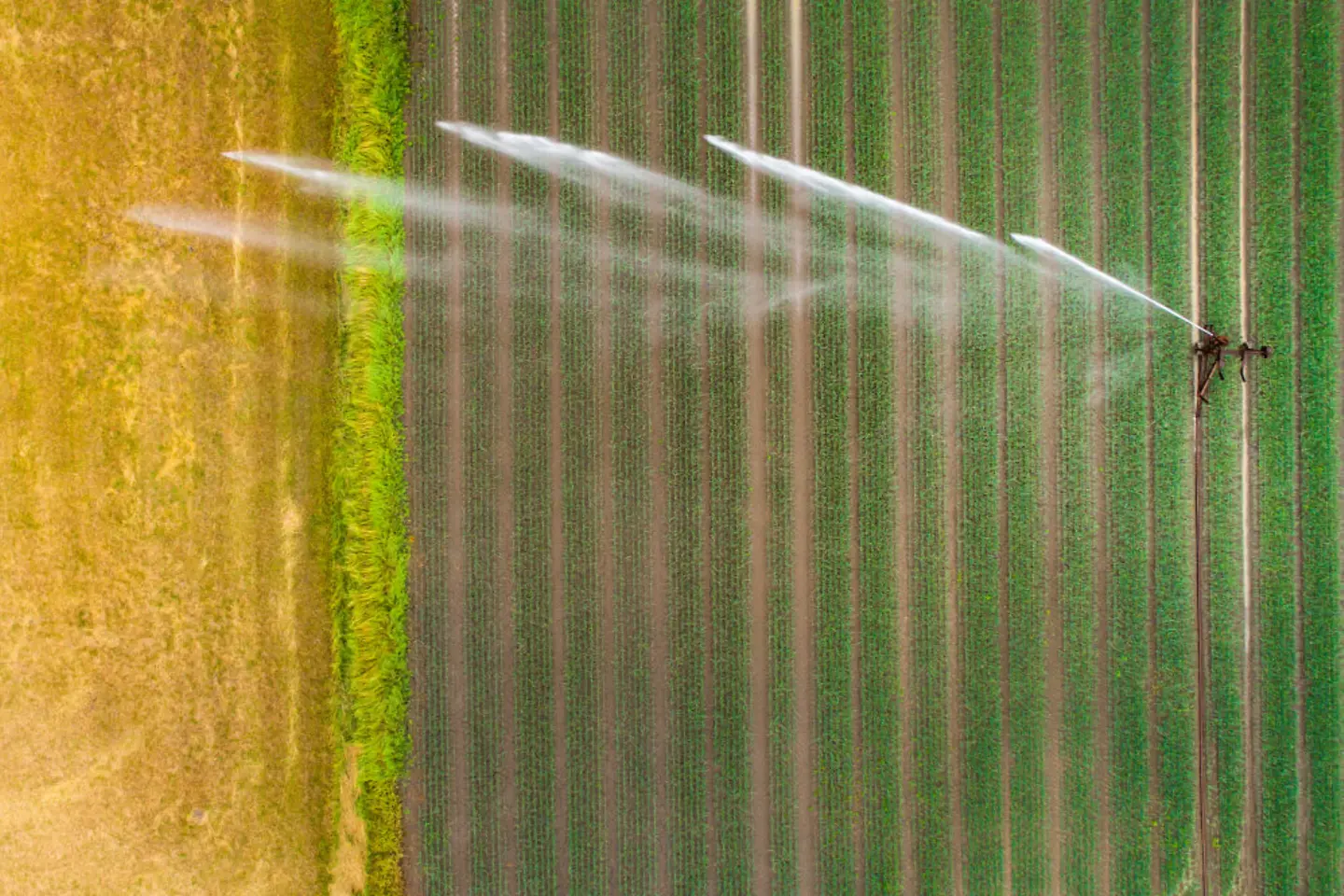

The recent summers pose a sustained burden to the water balance. With increasing average temperatures, stable, small-scale weather conditions, and changes in annual rainfall distribution, climate change is leading to changes in groundwater formation and declining local groundwater levels. Lower Saxony has already identified downward trends in groundwater levels at many measuring points throughout the state, particularly the measuring points in geest areas. Groundwater extraction has the potential to exacerbate this trend, particularly in times of drought.
Changes to the general climate conditions are increasing needs for agricultural irrigation, to maintain yields and quality of agricultural production. Consequently, a significant increase in the number of field irrigation wells has been recorded over the past 10 years.
The pressure to utilize the groundwater resource and the related competing uses, such as safeguarding public drinking water supplies and maintaining moisture-dependent habitats, demand improved water management. Near-time digital recording and centralized collection of extraction volumes is an important, forward-looking element in this process. And water management isn’t only a relevant subject for Diepholz district by far. Germany’s Federal Environment Ministry is considering a national water strategy, which will describe how the country will handle the important resource of water (particularly against the backdrop of climate change) nationwide.
The robust solution not only enables the local water authority to make up-to-date statements regarding extracted water volumes, but also speeds up and simplifies all process flows. Analyses of irrigation behavior also enable projections of the impact on the groundwater table. These analyses are simple and convenient, requiring minimal effort. The solution incurs very low running costs. Farmers can now check their meter values at any time, regardless of location, saving trips and travel time, and can irrigate their fields more efficiently by choosing the time of day better, for example.
Automatic alerts notify farmers when they reach or exceed threshold values for extraction. The solution can also be enhanced in individual cases, for instance, enabling farmers to start and stop field irrigation via texting. Ultimately, monitoring water consumption through field irrigation will pave the way to sustainable, more resource-friendly agriculture – and ensure the continued existence of the nature conservation areas in the district.
Further advantages:
With this digital water consumption measurement, we aim to implement a convenient solution – with the help of T-Systems – that optimizes our water management for field irrigation in the long term and enables reliable, data-driven decisions.
C. Bockhop, District Chief Executive, Diepholz district
The agriculture sector is one of the largest users of groundwater. Diepholz district in Lower Saxony is no exception. To irrigate their fields, farmers usually rely on wells that draw groundwater. Recording the consumed water volumes represents an important contribution toward optimizing – and potentially reducing – water use in the long term. It could also help ensure a more environmentally benign use of groundwater in the long term. Previously, farmers had to visit the water meter-equipped well locations regularly to satisfy the extensive documentation requirements. The extraction volumes were usually recorded as handwritten lists, which were submitted to the water authorities at the end of the irrigation season. The consolidated extraction volumes, which were reviewed by the water authorities, then had to be reported to the corresponding state authorities, together with the water extraction fees. It was a complex process. Could a digital solution help?
With Ground Water Monitoring for Smart Farming, T-Systems developed and implemented the right solution for Diepholz district on behalf of the local water authority. In this approach, the water meters become “things” in the Internet of Things (IoT) and transmit the water data digitally and automatically, so a computer system on the back end can interpret and process it. Generally, the existing analog water meters can be replaced or upgraded – in the simplest case, existing meters can be retrofitted through an electromagnetic contact. This contact makes it possible to generate impulses (for example, one impulse for every 1,000 liters of water), to record the consumption data. 30 existing water meters in Diepholz are being upgraded with such a solution. The devices are connected via a local gateway (LTE-M, with SIM card) to Deutsche Telekom’s IoT platform, where it is analyzed and visualized. Both the local water authority and the individual farmers can access their respective data via a web portal and get specific analyses with regard to water volumes and extraction times and locations.